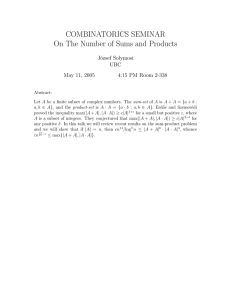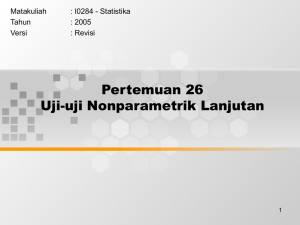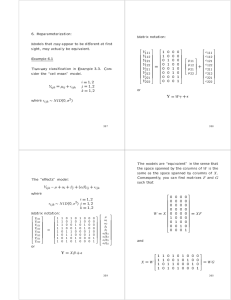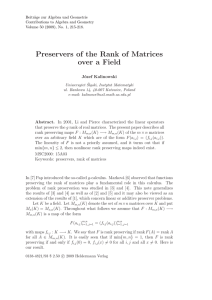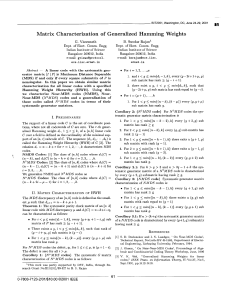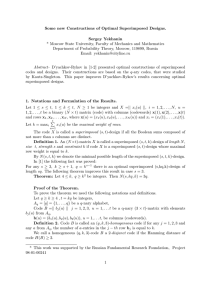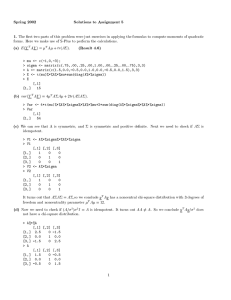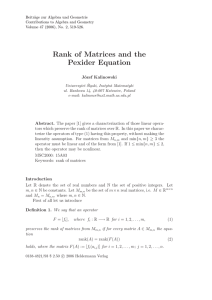2.We have seen that in R3, every line through 0 and every plan
advertisement
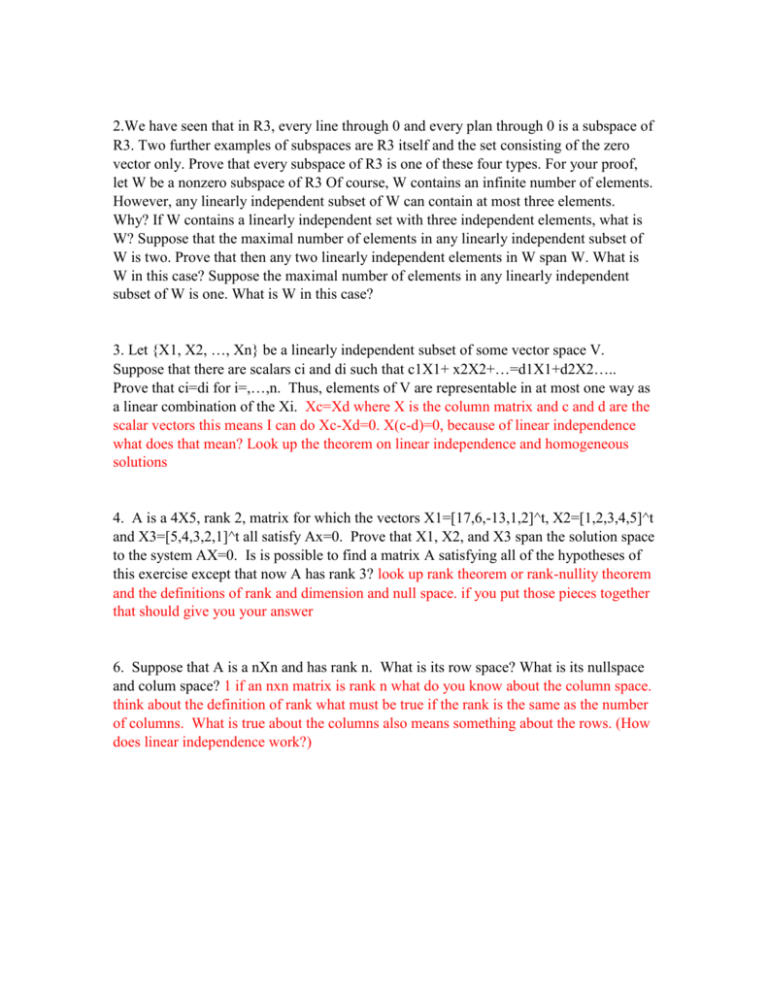
2.We have seen that in R3, every line through 0 and every plan through 0 is a subspace of
R3. Two further examples of subspaces are R3 itself and the set consisting of the zero
vector only. Prove that every subspace of R3 is one of these four types. For your proof,
let W be a nonzero subspace of R3 Of course, W contains an infinite number of elements.
However, any linearly independent subset of W can contain at most three elements.
Why? If W contains a linearly independent set with three independent elements, what is
W? Suppose that the maximal number of elements in any linearly independent subset of
W is two. Prove that then any two linearly independent elements in W span W. What is
W in this case? Suppose the maximal number of elements in any linearly independent
subset of W is one. What is W in this case?
3. Let {X1, X2, …, Xn} be a linearly independent subset of some vector space V.
Suppose that there are scalars ci and di such that c1X1+ x2X2+…=d1X1+d2X2…..
Prove that ci=di for i=,…,n. Thus, elements of V are representable in at most one way as
a linear combination of the Xi. Xc=Xd where X is the column matrix and c and d are the
scalar vectors this means I can do Xc-Xd=0. X(c-d)=0, because of linear independence
what does that mean? Look up the theorem on linear independence and homogeneous
solutions
4. A is a 4X5, rank 2, matrix for which the vectors X1=[17,6,-13,1,2]^t, X2=[1,2,3,4,5]^t
and X3=[5,4,3,2,1]^t all satisfy Ax=0. Prove that X1, X2, and X3 span the solution space
to the system AX=0. Is is possible to find a matrix A satisfying all of the hypotheses of
this exercise except that now A has rank 3? look up rank theorem or rank-nullity theorem
and the definitions of rank and dimension and null space. if you put those pieces together
that should give you your answer
6. Suppose that A is a nXn and has rank n. What is its row space? What is its nullspace
and colum space? 1 if an nxn matrix is rank n what do you know about the column space.
think about the definition of rank what must be true if the rank is the same as the number
of columns. What is true about the columns also means something about the rows. (How
does linear independence work?)
